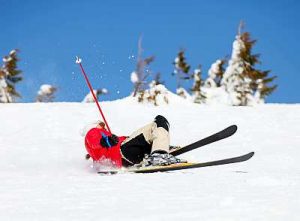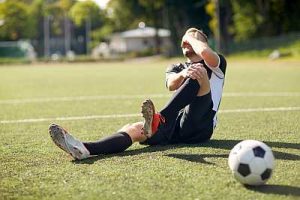Problems, Ruptures, and Management
Have you ever heard or felt a popping sensation in your knee? Followed by pain and swelling of the affected knee? If you have, then most probably you are an ACL rupture victim. Depending on your severity, you may need surgery as well. In this post, you will learn about ACL ruptures, its surgical management and roles of a Physiotherapist.
Anterior Cruciate Ligament
The knee is one of the toughest joints in our body. It has two different types of ligaments that support and connect Femur (Thigh) and Tibia (Shin).
1. Collateral ligaments; supports lateral and medial area of the joints
2. Cruciate ligaments; supports the anterior and posterior aspect.
The cruciate ligaments control the back and forth motion of your knee.
Causes of ACL Ruptures
Commonly, ACL ruptures are found among a sports person and someone who is physically active that involves stress on the knee.
Following are some of the activities that may cause an ACL Rupture.
• Sudden Stop – Skiing
• Direct impact on your knee – Football
• Incorrect jumping or landing technique
• Changing direction after a sudden slowdown

Signs and Symptoms:
• You will feel a “popping” sound in the affected knee
• Pain
• Swelling
• Decreased Knee Range of Motion
• Unable to bear weight
• Can’t continue the activities further

Preventing an ACL injury
Our well trained experts including physiotherapists at Faye Pattison Physiotherapy specialise in the knee and will assess, give you instructions and feedback on proper training and prescribe exercises which can help reduce the risk of an ACL injury.
Some of our programs at our Chelmsford clinic include:
1. Strengthening exercises – Strengthening exercises for your hip and knee joint muscles. The muscles are core parts of our body that backs up ligaments and supports joints. By strengthening the involved muscles, this will help you to strengthen the control of the joint to help prevent an ACL injury.
2. Warm-up Sessions – Warm-up sessions like proper stretching exercises, a deep tissue massage and mild exercises before your Sports and Activities can help activate your muscles fully, help promote elasticity of the muscles and ligaments, to perform better and to prevent an ACL rupture.
3. Postural Training – Our Physiotherapist or soft tissue therapist will also train you to maintain a correct posture while performing activities and sports. The poor posture leads to extra stress and pressure on the knee joint that increases the risk of ACL ruptures. With correct postural training, your knee joint will experience lesser stress forces and pressure that helps in preventing ACL injuries.
When do you need Surgical Interventions for the ACL?
Your Physician or your Physiotherapist can help advise whether or not surgery would be the best option for you.
Usually, if your ACL rupture is severe or completely ruptured, you need to have a surgical procedure.
Physiotherapy Pre-Op preparations
Before undergoing surgery, it may be recommended you undergo a session or two with a Physiotherapist.
Your Physiotherapist will instruct you to follow RICE Protocol.
R – Rest, discontinue the activity
I – Ice, Icing therapy session to reduce swelling and pain
C – Compress, to reduce swelling and gain knee range of motion
E – Elevate, to reduce swelling and thus pain
This protocol will help your pain and swelling to subside, and your knee to gain its full range. Your Physiotherapist can advise and help on how to prevent further injury, use exercise modalities and manual therapy to prepare the muscles and tissues for a faster and smoother recovery after surgery.

Physiotherapy Post-Op Management of an ACL
This stage is the special and important one in the course of your ACL rupture.
After completing your Surgery, you need to undergo intense Physiotherapy or soft tissue therapy sessions.
Our Experts at Faye Pattison Physiotherapy Clinic will work out the best options and therapists for soft tissue therapy, strengthening for you to gain your functional activities back as quickly as possible.
We work in following ways.
1. Manual therapy, hands on to the muscles
2. Taping may be incorporated
3. Range of Motion Exercises
4. Strengthening Exercise
5. Stretching exercise to gain the elasticity of muscles and ligaments
6. Prevention training and advice to help avoid reoccurrence of the injury
Conclusion
In this post, we have learnt about the causes, signs and symptoms of an ACL rupture. You have also learned how a Manual therapist like a Physiotherapist or a soft tissue therapist can play a great role in aiding a speedy recovery along with help to prevent from a re-occurrence.
So if you ever come across an ACL injury, want to know your rehabilitation and therapy will be with a well-experienced expert, you know what to do. Book an appointment with Faye Pattison Physiotherapy for your speedy and correct rehabilitation.





